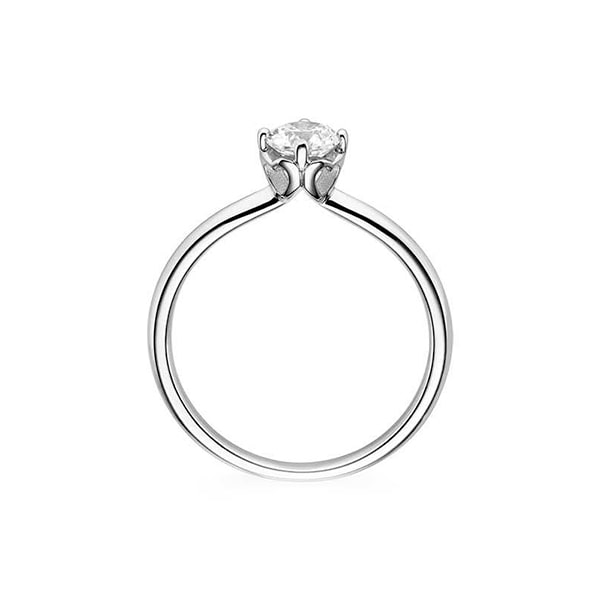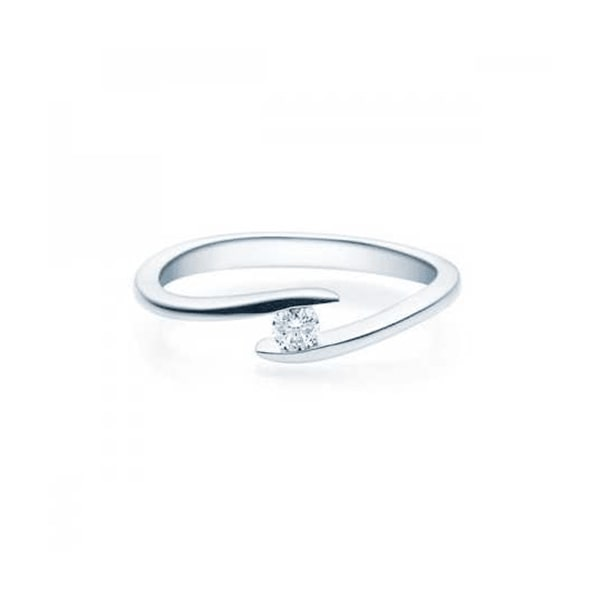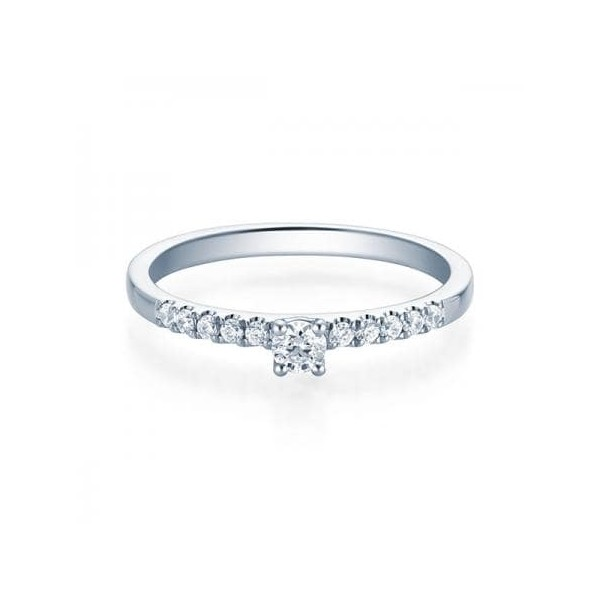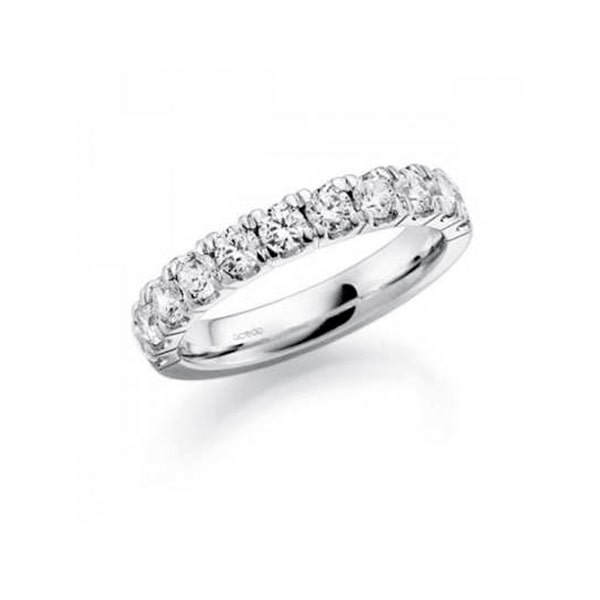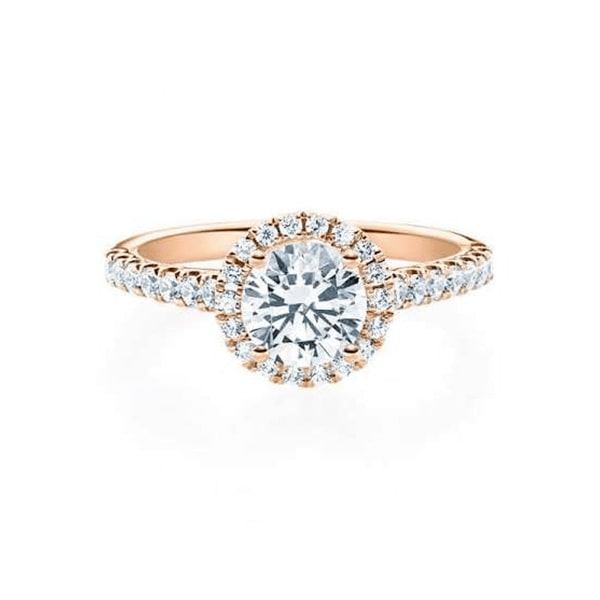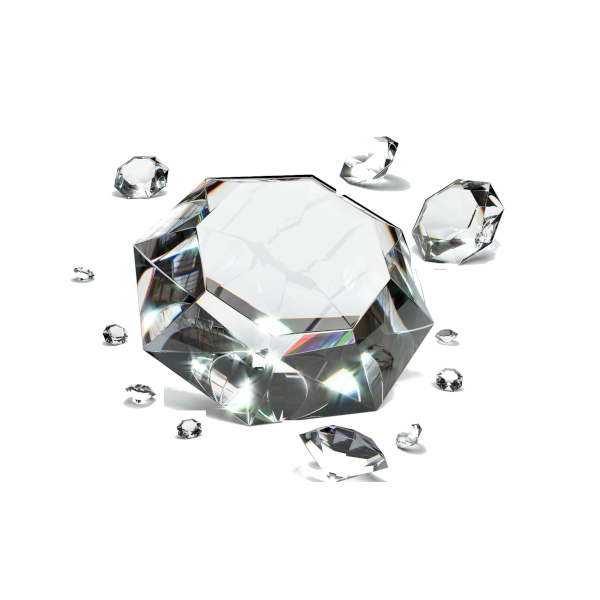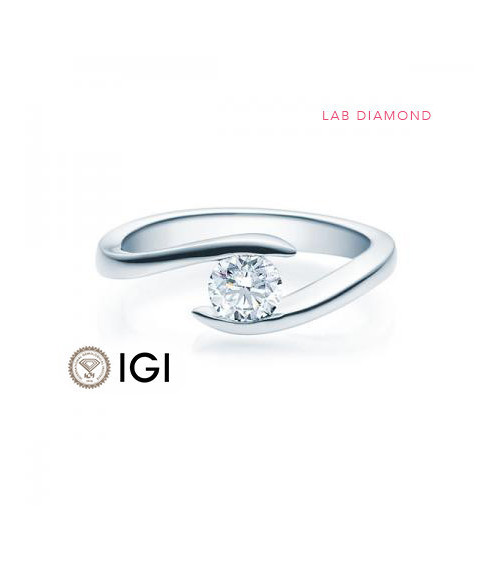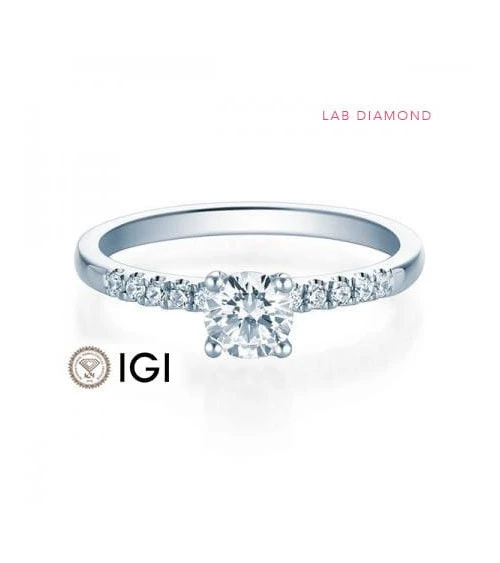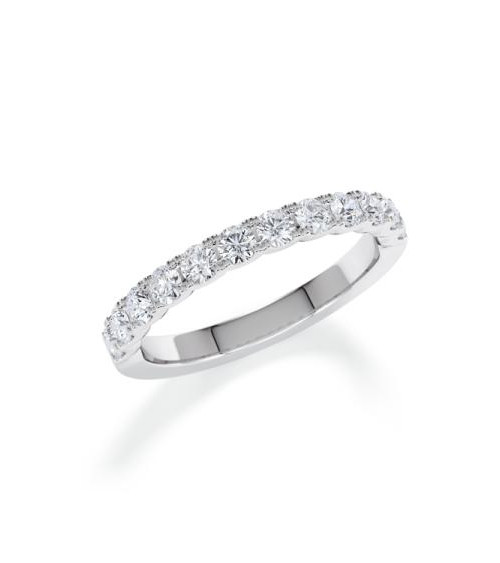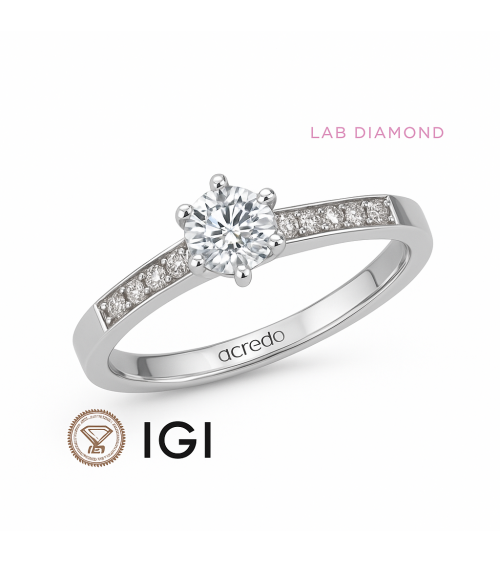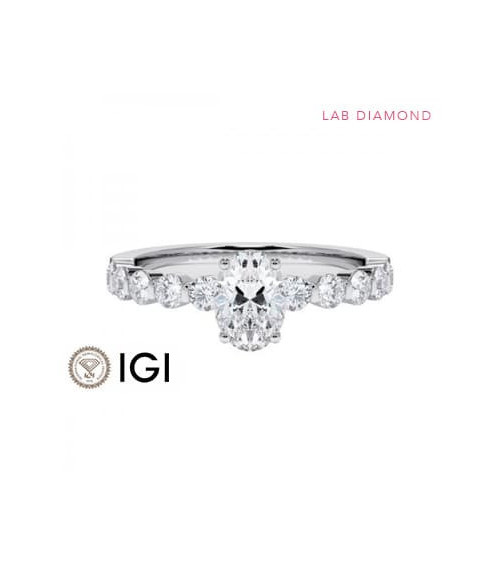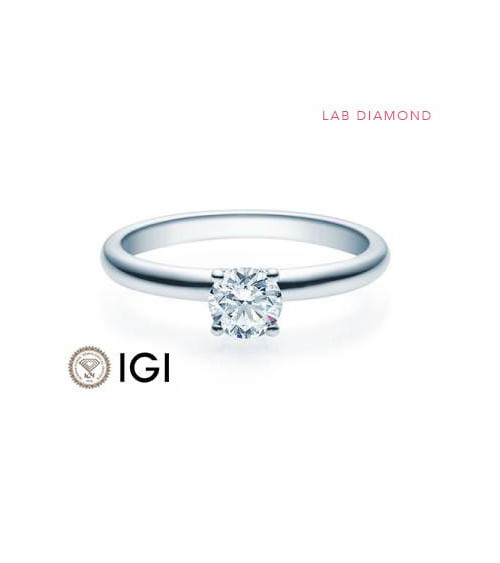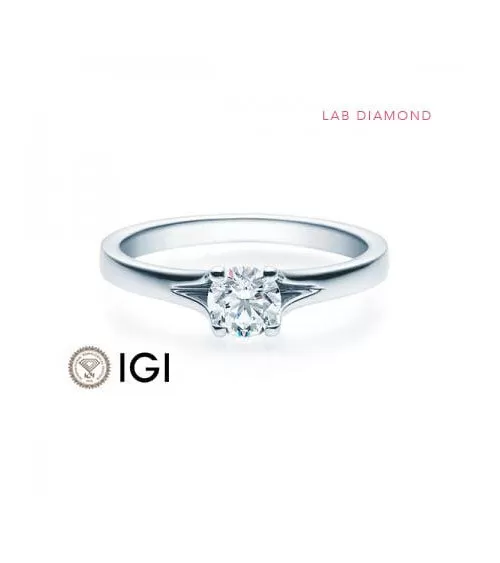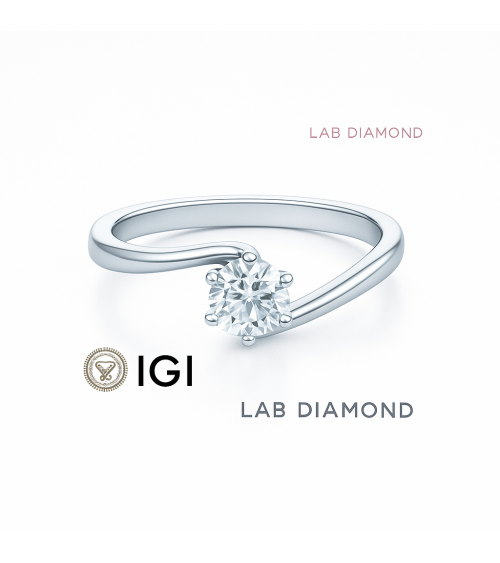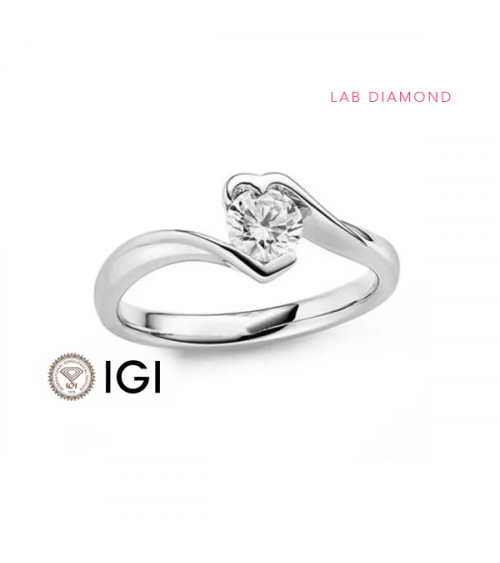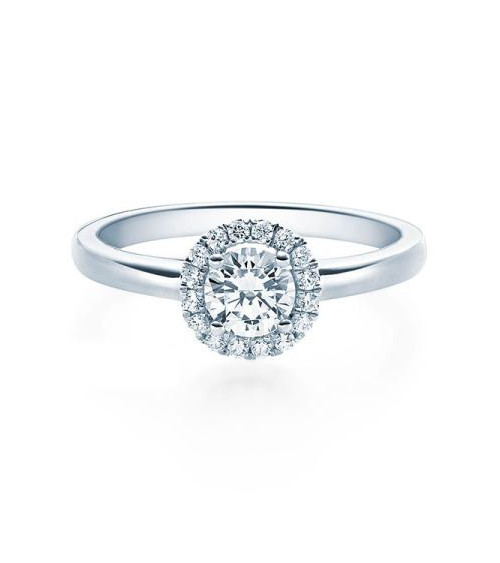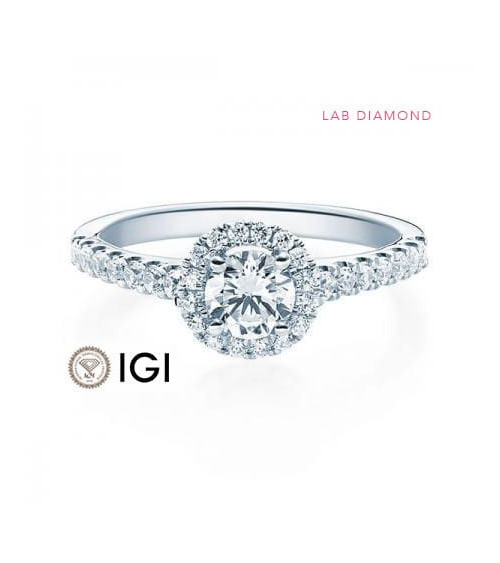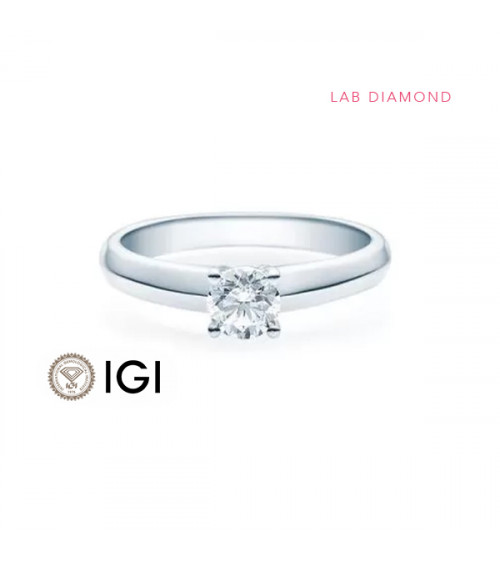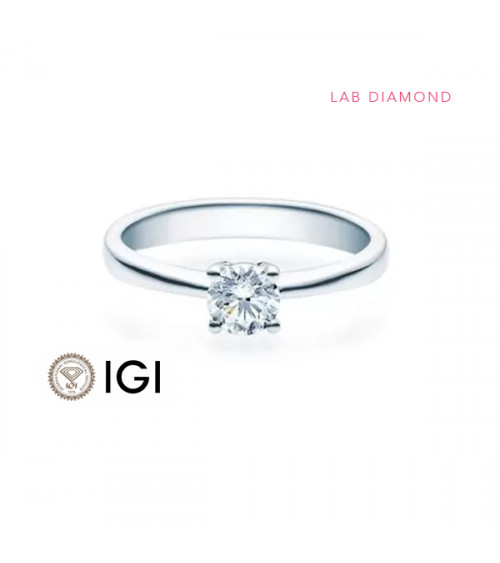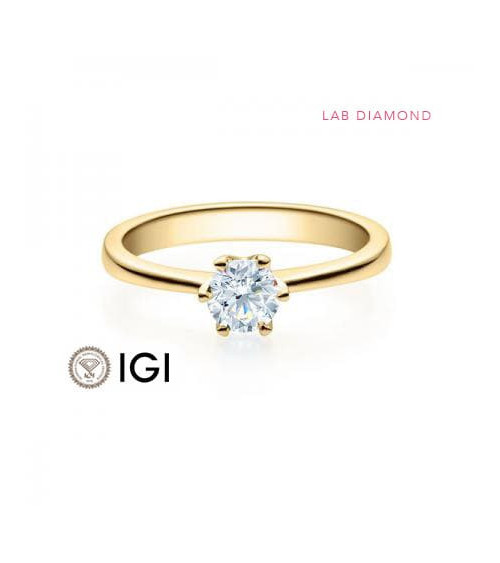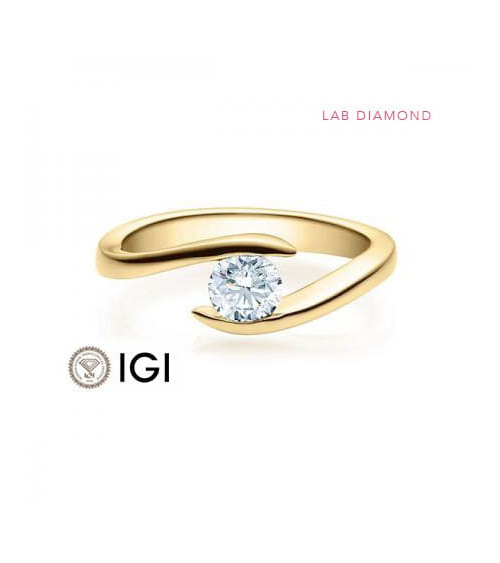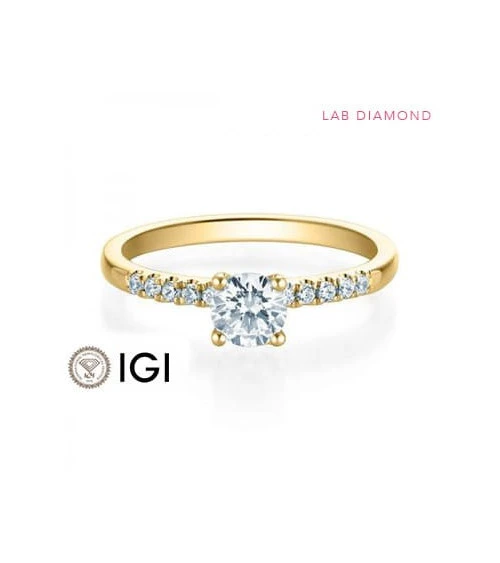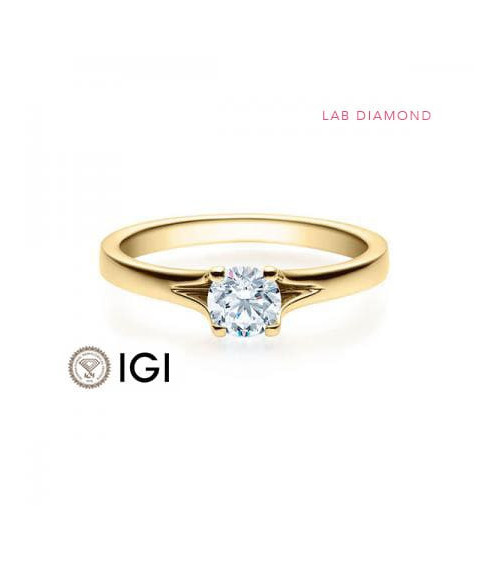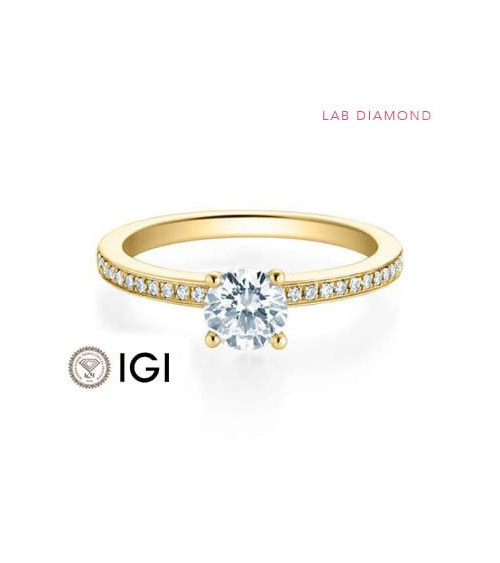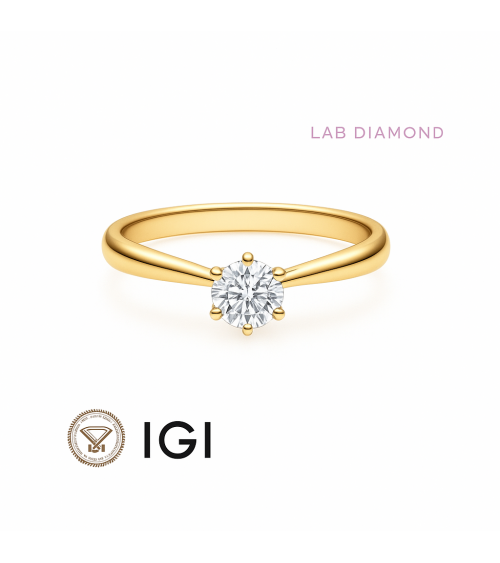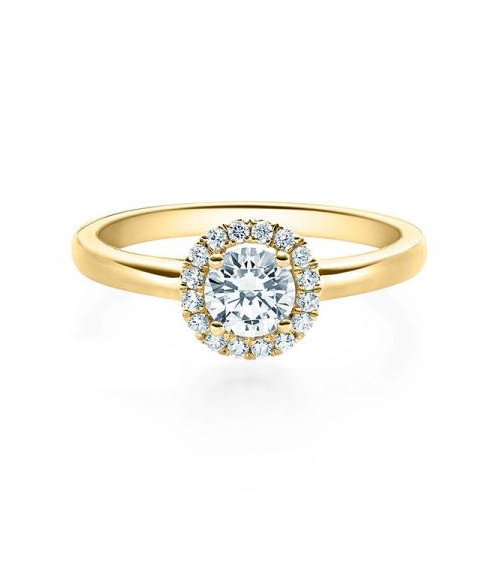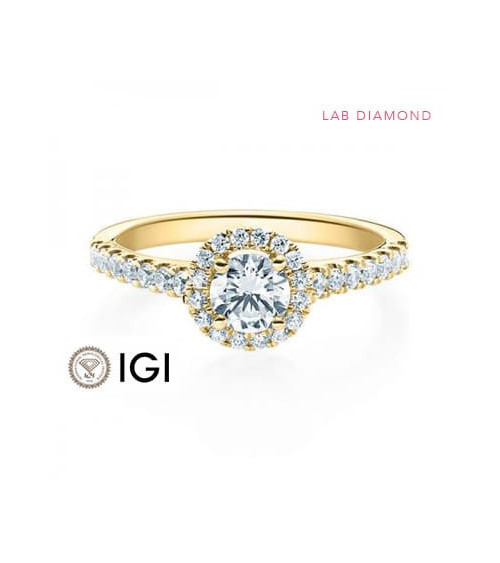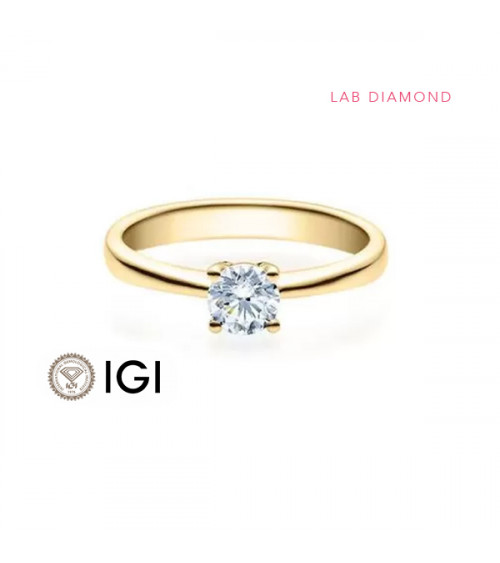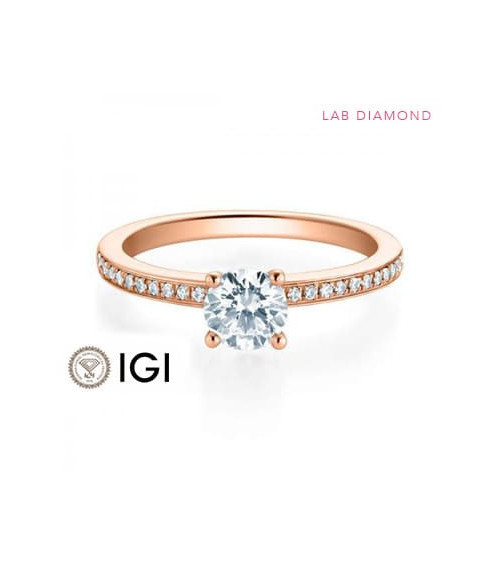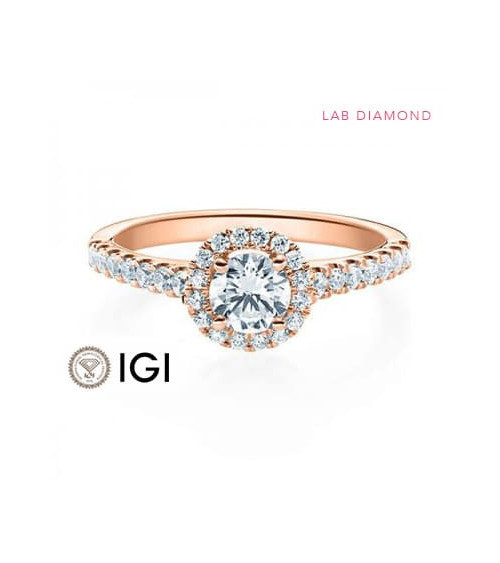Engagement rings with lab-grown diamonds
Engagement Rings with Ethical Lab-Grown Diamonds
More and more people are opting for an artificial diamond to accompany their engagement ring. Some of the reasons are as follows:
- It is a more economical option.
- Its ethical and responsible sourcing.
- The ability to choose a larger diamond compared to a natural diamond.
This less traditional alternative allows us to select a one-carat diamond, for example, at a significantly lower price than a natural diamond. It should also be noted that its market value is considerably lower, but it can undoubtedly be an option for many people and is likely to become an increasingly popular trend over the years.
Differences Between Engagement Rings with Artificial and Natural Diamonds
At first glance, even an expert could not tell the difference between a natural diamond and an artificial one. Their characteristics are the same; the difference lies in their origin and value. Natural diamonds require millions of years to form and their quantities are limited, which is why their value is much higher, especially in larger diamonds (from one carat we can see a significant price difference, around €3,000 - €5,000, depending on the quality and the market situation). To see this difference, we need a specialized machine that will tell us its nature.
Advantages and Disadvantages of a Lab-Grown Diamond Compared to a Natural Diamond
The first advantage is obvious: the price. An artificial diamond is significantly more economical than a natural diamond, especially as the size of the diamond increases. This means that with the same budget, we can choose a larger diamond or reduce our initial budget for the engagement ring.
The second advantage is relative: the ethical sourcing of diamonds. It is true that many diamonds today still come from irregular or unethical sources, popularly known as blood diamonds, involving child labor, unethical conditions, conflicts, etc. However, at Staring, all natural diamonds are also ethically sourced, as they are part of the popular and exclusive Responsible Jewellery Council, which guarantees that both the diamonds and the precious metals used to make the engagement rings come from protected areas and under ethical and safe conditions.
The first disadvantage we encounter is their lower value. An artificial diamond has approximately (depending on size and quality) 70% less value compared to a natural diamond, which can even increase in value over time, as has happened over the years. In fact, with the passage of time and advances in the sector, it is most likely that the value of artificial diamonds will decrease as their production becomes easier.






